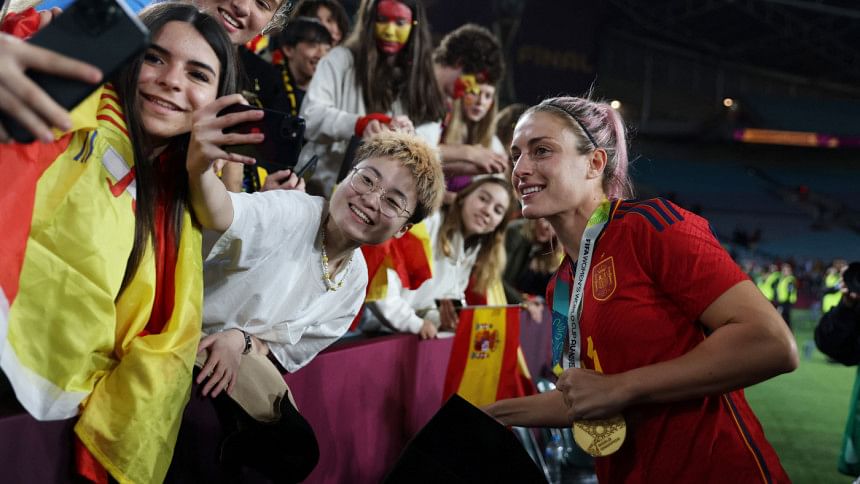A wonder goal for women's game

Scheduled in a far-flung time-zone and carrying eight extra teams, the ninth Women's World Cup kicked off in Australia and New Zealand a month ago with some doubts it could deliver on lofty ambitions.
Those concerns eased well before Sunday's final where Spain were crowned first-time champions by beating England 1-0 at a packed Stadium Australia in Sydney.
Less than a year after a player revolt tore the Spanish squad apart, La Roja's triumph was only one of the surprises for record crowds and TV audiences through the month-long festival of women's football.
Fears the first 32-team Women's World Cup might suffer for its size proved groundless, as did predictions of another processional victory for the United States.
Sunday's final was the first without either the U.S. or Germany involved, the four-times champion Americans dumped out of the round-of-16 by Sweden and the Germans exiting before the knockout phase.
The U.S.'s exit via penalty shootout ended a dynasty after back-to-back titles in 2015 and 2019.
U.S. forward Megan Rapinoe, the face of 2019, bowed out of international soccer with a wild kick over the bar in the shootout.
Long the benchmark, American women's soccer is now at a cross-roads as investment and talent flows to Europe, which produced three of the four semi-finalists.
Australia were the outliers in the last four, their thrilling run helping to draw nearly two million people to the games, far more than the previous record of 1.35 million for the 24-team tournament in Canada in 2015.
Home fans agonised over captain Sam Kerr's calf injury but her wonder goal in the semi-final was some consolation in the defeat by England.
Co-hosts New Zealand crashed out much earlier but the nation of 5 million warmly embraced the tournament. More than 700,000 attended matches there.
Eight nations made their World Cup debut and most exited with pride.
Morocco proved the pick of them, the tournament's first Arab team turning around a 6-0 horror show against Germany to reach the knockout phase.
It was Morocco's second World Cup fairytale in a year, with the men's team having made the semi-finals in Qatar.
The Philippines delighted in a victory over New Zealand, while fellow debutantes Portugal were denied a spot in the last 16 by a goal-post that saved U.S. blushes in their group match.
In a minor triumph for African soccer, three out of four of the continent's teams made it out of their groups, with Nigeria and South Africa joining Morocco in the last 16.
Four years after exiting France with three heavy losses, Jamaica's 'Reggae Girlz' won global admiration as they eliminated Brazil and broke through to the knockout phase.
Colombia, inspired by an army of pumped-up, yellow-clad fans, took the continent's mantle from Brazil and were the only Latin American side to reach the quarter-finals.
The tournament bid farewell to greats of the game while introducing new stars.
Christine Sinclair, the all-time leading goal-scorer in women's internationals, left disappointed when Olympic champions Canada crashed out of the group stage.
Brazil icon Marta played her last World Cup match in a draw against Jamaica.
Teenage talents stepped up in their place, with 19-year-old forward Salma Paralluelo earning the Young Player Award after scoring in the quarter-final and semi-final for Spain.
Colombia's 18-year-old forward Linda Caicedo shone on her World Cup debut, scoring two dazzling goals.
Spain playmaker Aitana Bonmati took the Golden Ball as the player of the tournament, having netted three goals in a superb campaign.
But it was Hinata Miyazawa's five goals making her the surprise Golden Boot winner during Japan's rollicking run to the quarter-finals.
FIFA boss Gianni Infantino said Australia and New Zealand generated more than $570 million in revenue, enabling soccer's global governing body to break even despite a big hike in prize money.
But with teams competing for a fraction of the prize pool awarded to the men in Qatar, the success of the Women's World Cup may pressure FIFA to fast-track its long-term goal of gender parity.

 For all latest news, follow The Daily Star's Google News channel.
For all latest news, follow The Daily Star's Google News channel. 








Comments